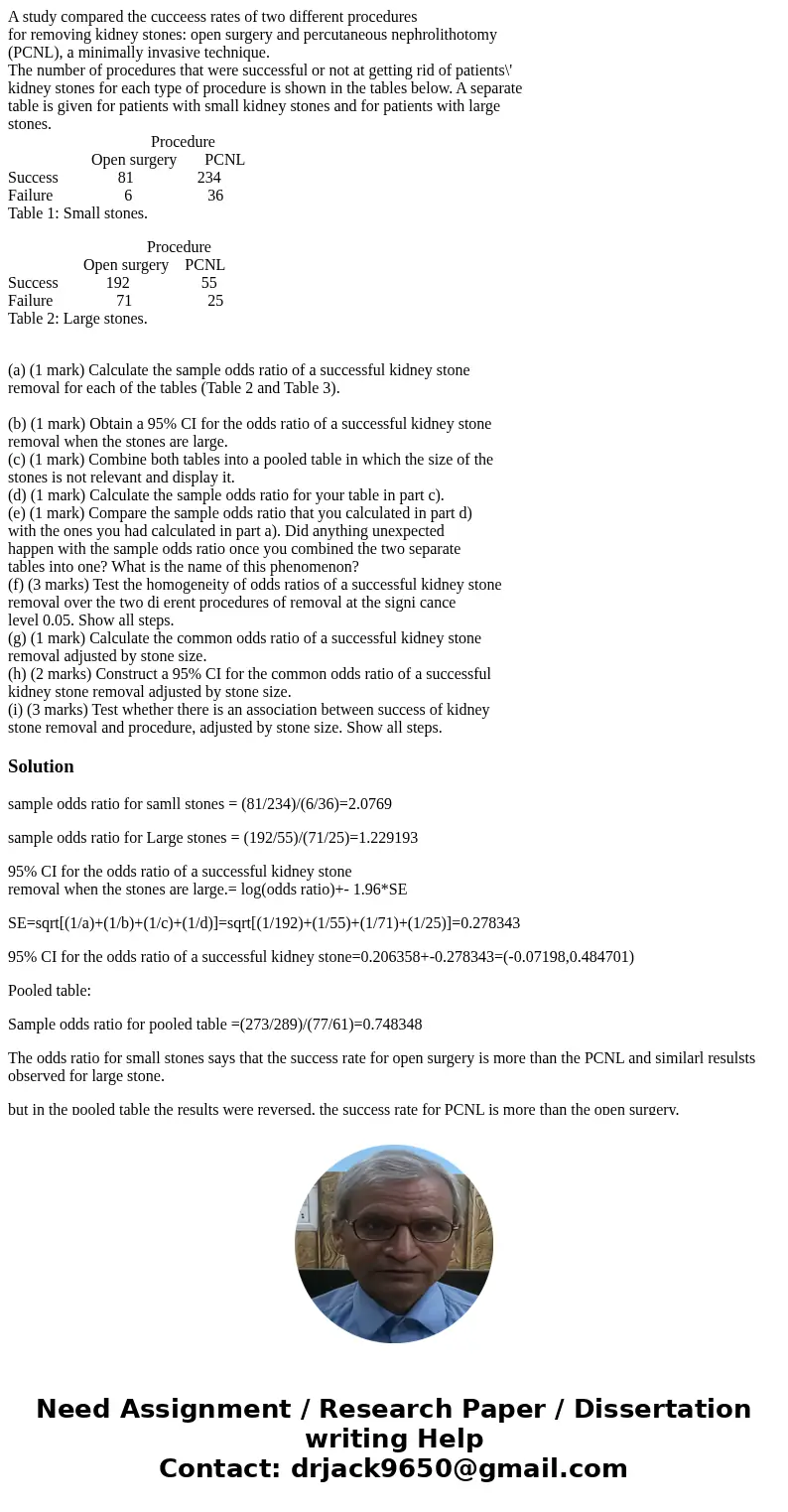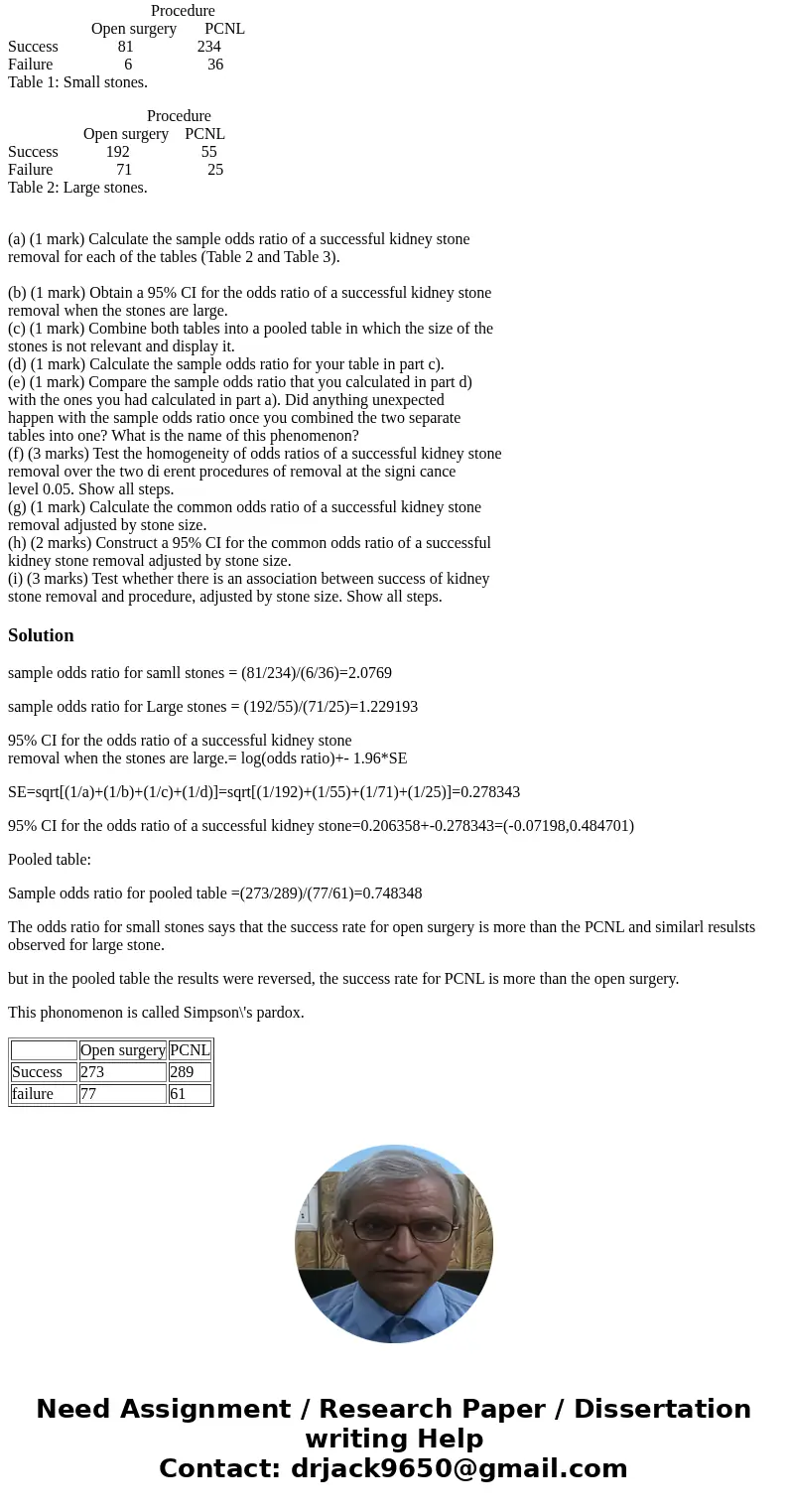A study compared the cucceess rates of two different procedu
A study compared the cucceess rates of two different procedures
for removing kidney stones: open surgery and percutaneous nephrolithotomy
(PCNL), a minimally invasive technique.
The number of procedures that were successful or not at getting rid of patients\'
kidney stones for each type of procedure is shown in the tables below. A separate
table is given for patients with small kidney stones and for patients with large
stones.
Procedure
Open surgery PCNL
Success 81 234
Failure 6 36
Table 1: Small stones.
Procedure
Open surgery PCNL
Success 192 55
Failure 71 25
Table 2: Large stones.
(a) (1 mark) Calculate the sample odds ratio of a successful kidney stone
removal for each of the tables (Table 2 and Table 3).
(b) (1 mark) Obtain a 95% CI for the odds ratio of a successful kidney stone
removal when the stones are large.
(c) (1 mark) Combine both tables into a pooled table in which the size of the
stones is not relevant and display it.
(d) (1 mark) Calculate the sample odds ratio for your table in part c).
(e) (1 mark) Compare the sample odds ratio that you calculated in part d)
with the ones you had calculated in part a). Did anything unexpected
happen with the sample odds ratio once you combined the two separate
tables into one? What is the name of this phenomenon?
(f) (3 marks) Test the homogeneity of odds ratios of a successful kidney stone
removal over the two di erent procedures of removal at the signi cance
level 0.05. Show all steps.
(g) (1 mark) Calculate the common odds ratio of a successful kidney stone
removal adjusted by stone size.
(h) (2 marks) Construct a 95% CI for the common odds ratio of a successful
kidney stone removal adjusted by stone size.
(i) (3 marks) Test whether there is an association between success of kidney
stone removal and procedure, adjusted by stone size. Show all steps.
Solution
sample odds ratio for samll stones = (81/234)/(6/36)=2.0769
sample odds ratio for Large stones = (192/55)/(71/25)=1.229193
95% CI for the odds ratio of a successful kidney stone
removal when the stones are large.= log(odds ratio)+- 1.96*SE
SE=sqrt[(1/a)+(1/b)+(1/c)+(1/d)]=sqrt[(1/192)+(1/55)+(1/71)+(1/25)]=0.278343
95% CI for the odds ratio of a successful kidney stone=0.206358+-0.278343=(-0.07198,0.484701)
Pooled table:
Sample odds ratio for pooled table =(273/289)/(77/61)=0.748348
The odds ratio for small stones says that the success rate for open surgery is more than the PCNL and similarl resulsts observed for large stone.
but in the pooled table the results were reversed, the success rate for PCNL is more than the open surgery.
This phonomenon is called Simpson\'s pardox.
| Open surgery | PCNL | |
| Success | 273 | 289 |
| failure | 77 | 61 |


 Homework Sourse
Homework Sourse